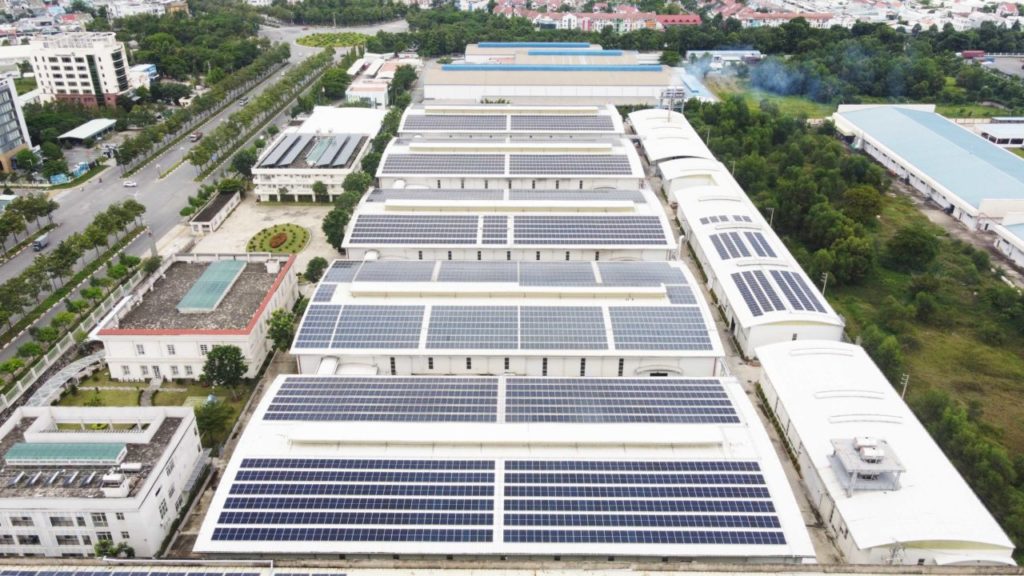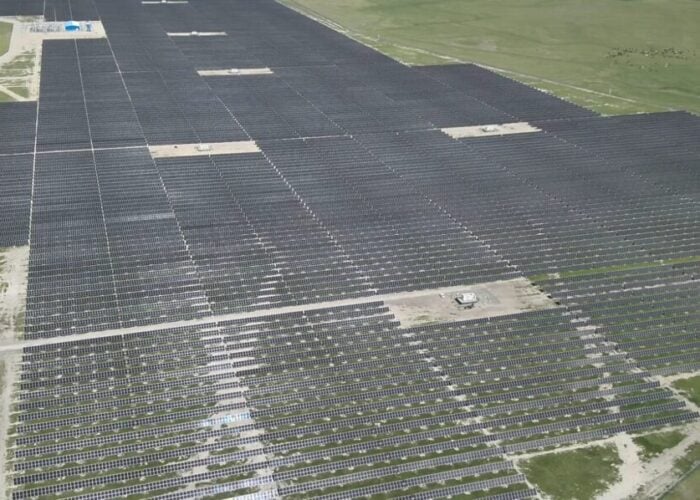
A new report published by the Asian Development Bank (ADB) and a collection of non-profit organisations – Bloomberg Philanthropies, ClimateWorks Foundation and Renewable Energy For All – has found that new additions to the solar, battery storage and electric vehicle manufacturing sectors in Southeast Asia could deliver up to US$100 billion in new revenue.
The report, ‘Renewable Energy Manufacturing: Opportunities for Southeast Asia’, argues that investing in new renewable manufacturing capacity, particularly solar modules, could be of financial benefit to the region. According to the International Energy Agency, Southeast Asia’s electricity demand is set to increase by two and a half times between 2020 and 2050, and meeting this demand with new manufacturing capacity in Southeast Asia could creature up to six million jobs by 2050, and contribute US$90-100 billion by 2030.
Unlock unlimited access for 12 whole months of distinctive global analysis
Photovoltaics International is now included.
- Regular insight and analysis of the industry’s biggest developments
- In-depth interviews with the industry’s leading figures
- Unlimited digital access to the PV Tech Power journal catalogue
- Unlimited digital access to the Photovoltaics International journal catalogue
- Access to more than 1,000 technical papers
- Discounts on Solar Media’s portfolio of events, in-person and virtual
“As we often say in ADB, the battle against climate change will be won or lost in Asia and the Pacific,” said Ramesh Subramaniam, director general and chief of the Asia and Pacific sectors group at the ADB. “A decisive front in that battle is Southeast Asia.”
“This research shows the promise of renewable energy manufacturing – with policy, technical, and financing support – in helping the region’s developing countries to transition away from coal-based energy, while lowering carbon emissions, expanding local industrial capabilities, spurring job creation, and driving long-term economic growth.”
Growing domestic production
Much of this forecasted value comes from the region’s strong solar manufacturing capacity. The report notes that Malaysia, Thailand and Vietnam currently produce 9-10% of the world’s PV cells and modules, and that Southeast Asia, as a whole, could improve its manufacturing capacity from 70GW today to 125-150GW by the end of 2025.
Much of this stems from strong government support for these sectors, with the report’s authors noting that “the region has made headway with capturing [the solar manufacturing] opportunity.”
“Within Southeast Asia’s US$160-200 billion sustainability revenue pools in 2030, 55–60% is driven by low-carbon mobility and clean power, representing significant opportunities for manufacturers of inputs into these sectors,” reads the report.
There is also considerable variation regarding individual countries in Southeast Asia, and aspects of the solar manufacturing supply chain. Malaysia alone accounts for 3% of the world’s polysilicon production capacity, with 32GW of capacity in 2022, white Vietnam dominates the module assembly process, with 34GW of capacity in 2022; both figures are the highest in the region. Meanwhile, this week, SunAsia Energy announced plans to build a 1.3GW floating solar project on Laguna Lake, the largest lake in the Philippines.
Singapore, Cambodia and Indonesia are also involved in the cell manufacturing and module assembly sectors, collectively accounting for 7GW of manufacturing capacity and 10GW of assembly capacity, as countries around the region have sought to involve themselves in the solar manufacturing sector.
Global export markets
Changes in Southeast Asia’s commercial relations with other parts of the world could also make the region’s solar manufacturing more profitable. The report notes that Southeast Asia’s module exports to the US are likely to fall in the wake of the Inflation Reduction Act putting greater emphasis on domestic US production, but that exports to Europe; Latin America, the Middle east and Africa; and other countries in Southeast Asia are all likely to increase.
Much of the motivation for this expansion comes from the ambitious domestic production targets in many of these countries. Vietnam, for instance, aims to reach net-zero emissions by 2050, and analysis from McKinsey found that, in order to reach this target, it would have to install 70GW of new solar capacity, up from 16.5GW in 2022.
Ambitious clean energy targets such as these are encouraging national governments to invest in solar manufacturing for their own ends, laying the groundwork for adjacent industries, such as the large-scale export of solar cells and modules.
The inverse is also true, with countries in other regions eager to expand their total solar capacity, but struggling to meet demand for solar power from modules manufactured domestically. Europe is particularly notable, with a report from SolarPower Europe finding that Europe plans to bring online 320GW of new solar PV capacity by 2025, but there are plans in place to add just 30GW of new solar manufacturing capacity each year over the same period.
As a result, the ADB report expects exports to Europe to increase by the largest amount, from 59GW of capacity in 2022 to 87GW of capacity in 2026. Its authors also note that Southeast Asia, which it expects to receive 72GW of capacity, is to become “the most reliable source of stable revenue amid potential export uncertainties”.
Challenges remain
Yet challenges remain for the Southeast Asian manufacturing sector, beginning with the cost of producing modules. The report notes that the average production cost for solar manufacturers in the region is 15-35% higher than for manufacturers in China, and while this may not dissuade western companies from importing Southeast Asian goods due to a reluctance to deal with China, this will impede the profitability of the Southeast Asian sector.
The specific economic and geographic conditions of these countries has also raised production costs. The report finds that wages for solar manufacturers in Cambodia are “comparable” to those in Vietnam, but lower levels of education in Cambodia means more workers are required to produce the same volume of modules as Vietnam, driving up total production costs. Meanwhile, manufacturers and distributors in the Philippines face “challenges with transportation between islands”.
Yet the report’s authors suggest that strong government policies could help overcome many of these challenges. In the Philippines, the establishment of institutions such as the Philippine Economic Zone Authority and free trade zones have reduced the cost of industrial operations, and the report’s authors call on the Cambodian leadership to invest in education and labour reform to optimise its solar manufacturing capacity.
“Measures in Cambodia could target labour productivity factors, given the drag on export competitiveness observed from lower labour efficiency,” reads the report. “Just by increasing labour productivity to reach regional benchmarks, Cambodia can improve its solar PV production costs by 10% even at the current scale of production.”







